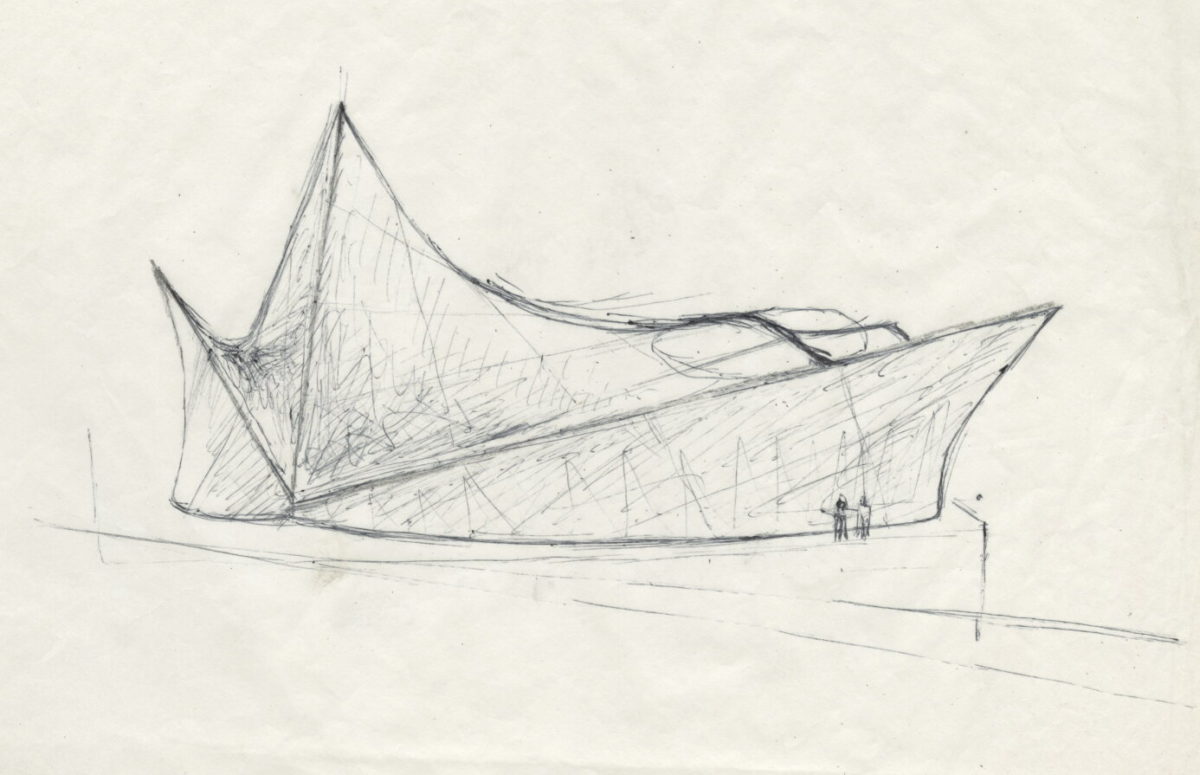Xenakis had a decisive encounter with the conductor Hermann Scherchen, following the premiere of Varèse’s Déserts in Paris in 1954. Since then, Scherchen has taken the young composer under his wing and regularly invites him to the summer academies he organizes in his experimental music center in Gravesano, Switzerland. When in 1961 he decided to create an important place for musical encounters and audiovisual research, he asked Xenakis to design a room for experimental music. The plan that the architect sent to Scherchen (entitled “SCHR 100”) in the early fall of 1961 shows the continuity of his research on hyperbolic paraboloids begun with the Philips Pavilion. The thin reinforced concrete shells that cover the space are now less steep than those of the Dutch Pavilion, allowing the public to walk on the roof, thus implanting the building in its environment. In addition, Xenakis pushes the plastic (and constructive) challenge even further, by proposing four paraboloid structures, instead of the three used for Philips. A paper model, a few sketches and a plan geometrically defining the curves are the only witnesses to Xenakis’ architectural research on concert spaces, which was not realized due to a lack of means.
Categories
Auditorium for Hermann Scherchen

